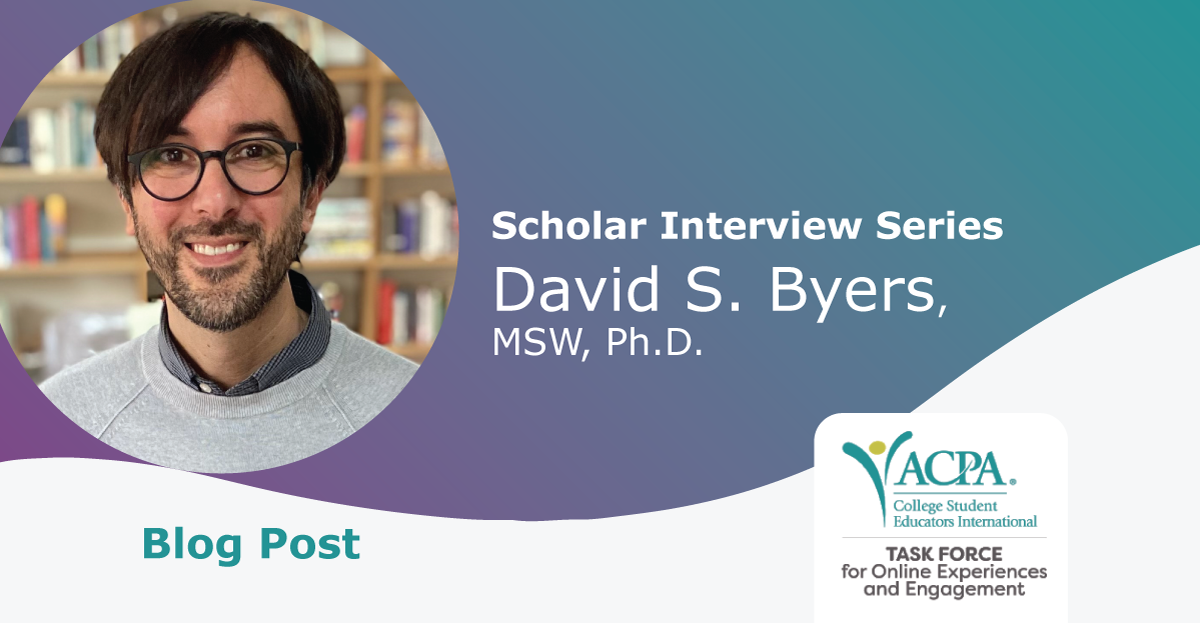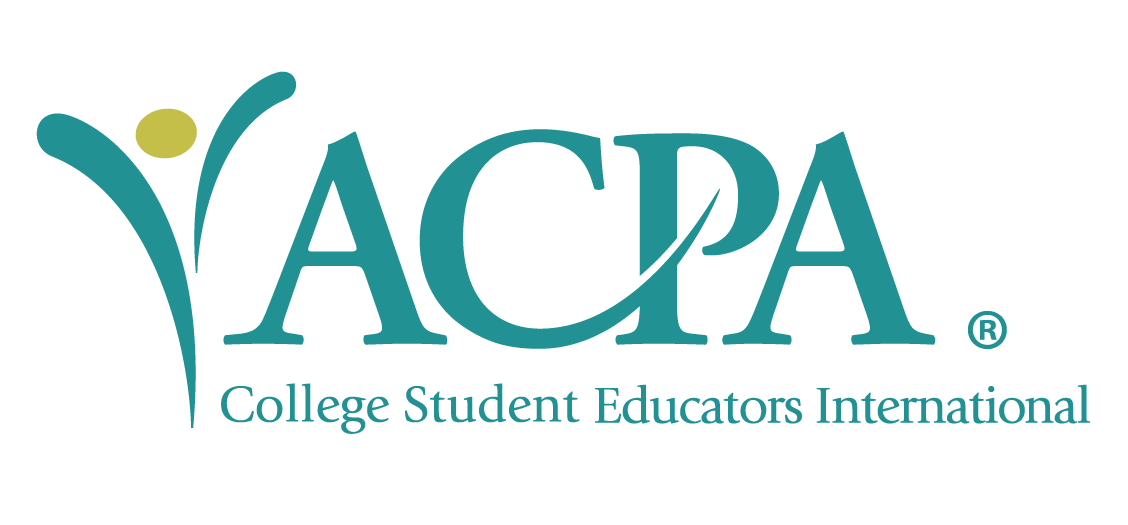
We’re excited to highlight the scholarship of David S. Byers, MSW, Ph.D., Assistant Professor at Bryn Mawr College Graduate School of Social Work and Social Research. His research examines ethical responses to stigma and precarity, including bystander ethics and the uses and limits of allyship, particularly in response to bias-based aggression. His 2021 Journal of Diversity in Higher Education article titled, “Staying in their own lane: Ethical reasoning among college students witnessing cyberbullying,” explores how college students feel about witnessing bias-based cyberbullying and whether to engage in bystander intervention.
We got the chance to ask Dr. Byers a few questions about his work:
What led you to this research?
Before transitioning into academia I worked in counseling programs at several universities and community clinics and did psychotherapy and consultations in high schools and colleges. I encountered many clients–often queer and trans young people–who sought help because they had experienced or witnessed bias-based aggression online in spaces where they were exploring themselves and finding community. I ran psychotherapy process groups where students would seek and receive support from each other about how to respond to extremely threatening racist, homophobic, transphobic, and other gender-based aggression–and I could see firsthand how generative and important this peer-to-peer support was. This got me interested in peer-based ethical development and especially in bystander dynamics in relation to bias-based aggression. I am compelled by the moral injury to everyone involved when a group fails to respond to bias-based aggression toward peers with minoritized social identities, and also in the potential for groups to develop prosocial capacities in responding collectively and persuasively to these kinds of aggression.
Based on your research, what recommendations do you have for better supporting students as they navigate online college environments and experiences?
I hope that my work joins with others in helping to expand and deepen thinking about a group’s role in interpersonal bias-based aggression. There have been a number of limitations to ecological studies of bullying and aggression, for example, most have failed to consider the dynamics of social identity–although social identities and their intersections often relate to why and how adolescents and emerging adults are targeted. Many models have also been unclear about how power disparities operate between peers in bias-based aggression (Byers, 2016; Byers & Certulli, 2021).
One effect I have observed is that college students with more dominant social identities–white students and cisgender and straight students–sometimes draw on ethical frameworks in explaining why they did not try to intervene with peers facing bias-based aggression. They reason, for example, that it is “not their place” or they should “stay in their own lane” (Byers & Cerulli, 2021). In other words, when white students witness racist aggression toward a peer, the risk of being accused of overstepping or acting like a “white savior” might seem worse to them than inaction. In attempting to behave ethically, or at least to avoid scrutiny, they fail to act or show care to a peer being targeted. Sometimes students with more dominant positionalities also misjudge aggression online–if it seems too extreme they may reason that it isn’t really targeting a peer or that a peer wouldn’t take it seriously. Sometimes students with minoritized social identities agree on this, sometimes they don’t, however they very often feel alienated when their peers fail to respond, regardless of their reasons.
Another prominent group effect is scapegoating (Byers, 2013; Byers & Cerulli, 2021). Groups of students who have witnessed bias-based aggression, often without a reasonable collective response, sometimes then respond punitively toward one or two individuals they can blame. It’s almost as if attributing the aggression to an individual absolves the larger group of its bias or serves as proof that they are not responsible. I have described the performative blaming of individuals as a kind of “ethical narcissism.” From a developmental perspective, it makes sense that students in emerging adulthood want to feel seen in their ethical learning–especially by each other–but scapegoating can also get in the way of developing capacity for ethical humility–of recognizing responsibility and accountability (Byers, 2016; Byers & Cerulli, 2021). Retributive group responses may also drive aggression into anonymity where it can be more extreme and scary for people targeted.
Some recommendations based on my research:
- Campus leaders should hold discussions during orientation and throughout the year about bias-based aggression online and offline, which can circulate within and across campuses and with other people outside of campus. It is important to engage students in problem-solving together about how they want to support each other in addressing online bias-based aggression and how their social identity standpoints may inform expectations and need for support from the larger group and potentially from campus leaders and resources.
- Students often do not bring concerns to campus leaders, so it is important for students to work together to engage bias-based aggression when they see it. Campus leaders can help by checking in with students regularly.
- Students with minoritized social identities may feel very stressed when they witness bias-based aggression targeting a student or students with shared identities or experiences. Some students have worked to form “circles of protection” to help problem-solve in response to aggression, support each other emotionally, and form community.
- Students who are targeted by anonymous online bias-based aggression may sometimes find it useful to copy and paste anonymous content to forums that are not anonymous. Having names attached will often promote group accountability.
What’s next for this research project?
In a forthcoming paper in Journal of Aggression, Maltreatment, and Trauma, my colleagues and I report a strong finding that queer and trans identified college students, across racial identities, are exceptionally likely to intervene when they witness bias-based aggression. We cannot know why or how from the current research, but it may be that many queer and trans students identify as outsiders to dominant social scripts and so develop prosocial capacities for intervention and care. Their motivations and tactics might guide us in building more socially engaged and reflective schools.
Connection to the mission of ACPA’s OEE (Written by Virginia Byrne)
Dr. Byers’ research on bias-based online aggression is important for Student Affairs professionals to consider, particularly those working in Community Rights and Conduct, Counseling and Wellness, New Student & Orientation Programs, and Student Governance. Students are regularly exposed to these aggressive online interactions, and often need a place to discuss both how it makes them feel and what they should be doing in response. We encourage our colleagues to consider how to weave these conversations into their work with students. For example, during New Student programs or First-Year Experience courses, ask students to reflect on a time in which they witnessed bias-based online aggression and brainstorm ways in which they could support future victims.
Interested in learning more about Dr. Byers?
http://dsbyers.digital.brynmawr.edu
https://www.brynmawr.edu/inside/people/david-s-byers
References
- Byers, D. S. (2013). “Do They See Nothing Wrong with This?”: Bullying, Bystander Complicity, and the Role of Homophobic Bias in the Tyler Clementi Case. Families in Society, 94(4), 251–258. https://doi.org/10.1606/1044-3894.4325
- Byers, D. S. (2016). Recognition of social pain among peers: Rethinking the role of bystanders in bullying and cyberbullying. Smith College Studies in Social Work, 86(4), 335-354. https://doi.org/10.1080/00377317.2016.1222771
- Byers, D. S., & Cerulli, M. (2021). Staying in their own lane: Ethical reasoning among college students witnessing cyberbullying. Journal of Diversity in Higher Education, 14(4), 508–518. https://doi.org/10.1037/dhe0000180

